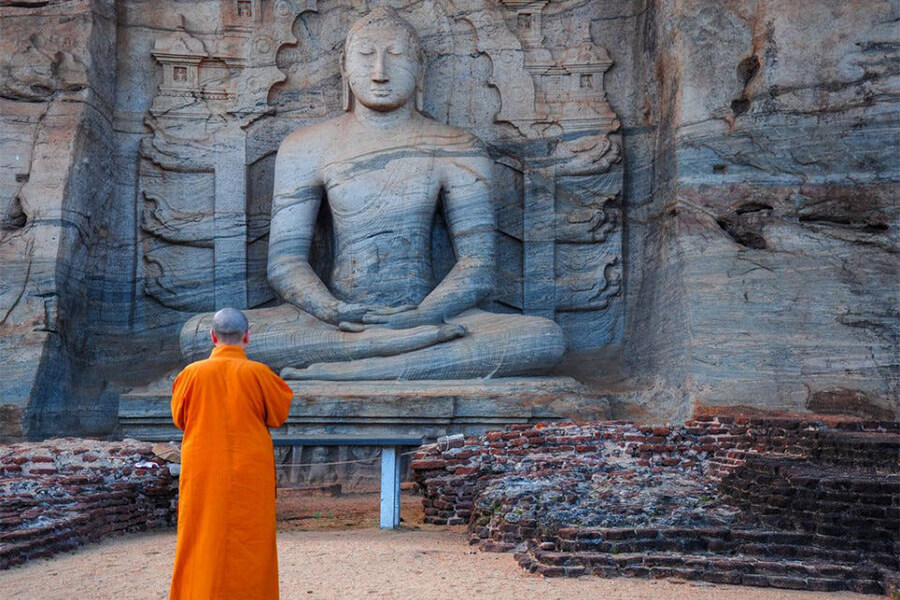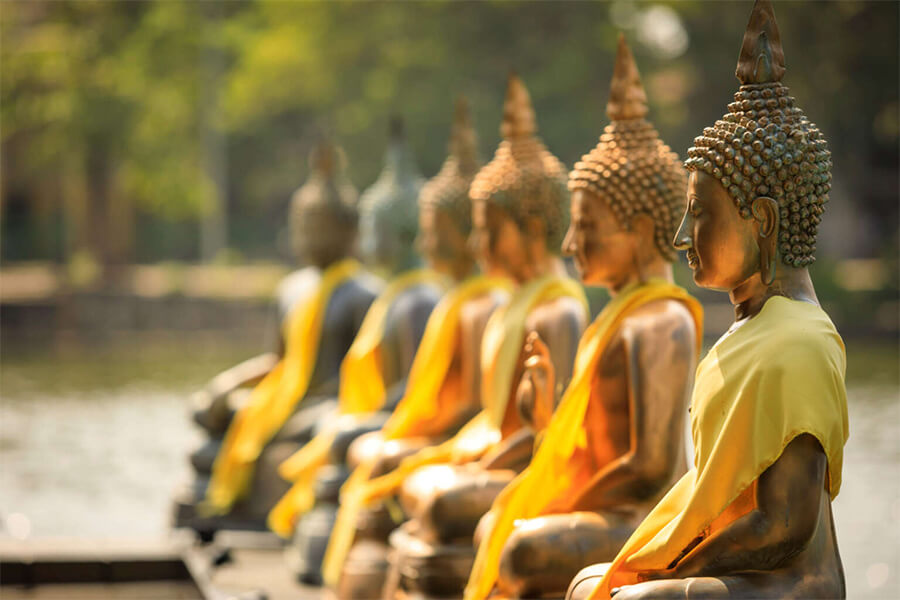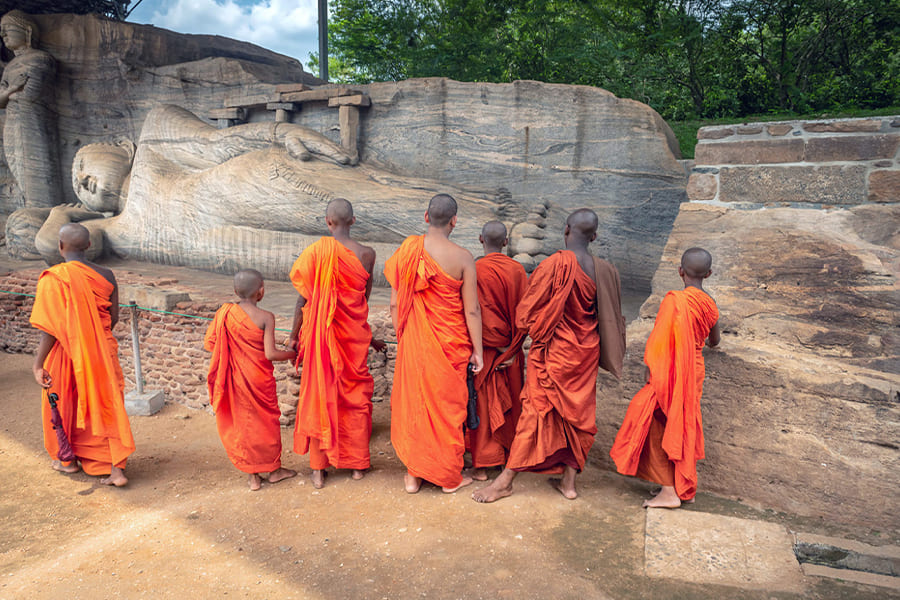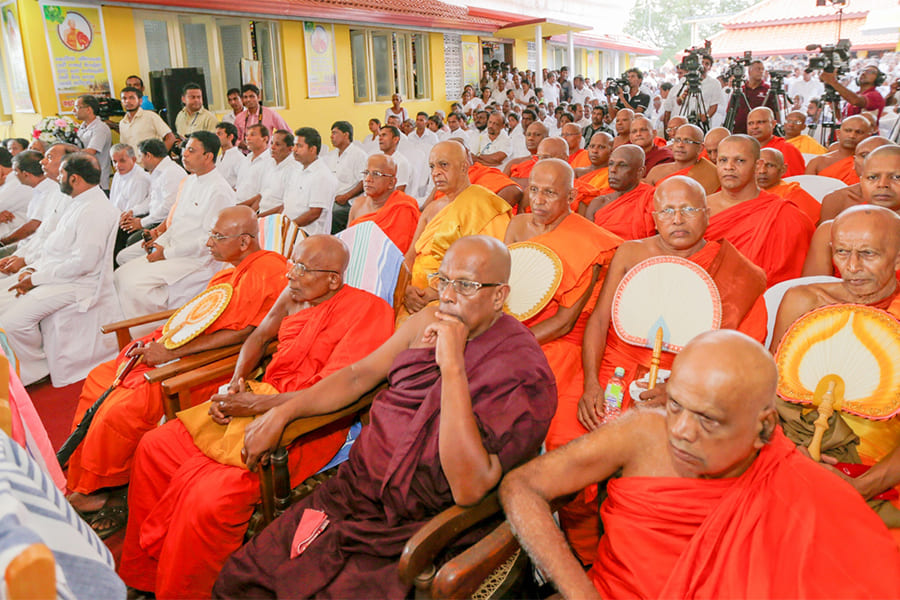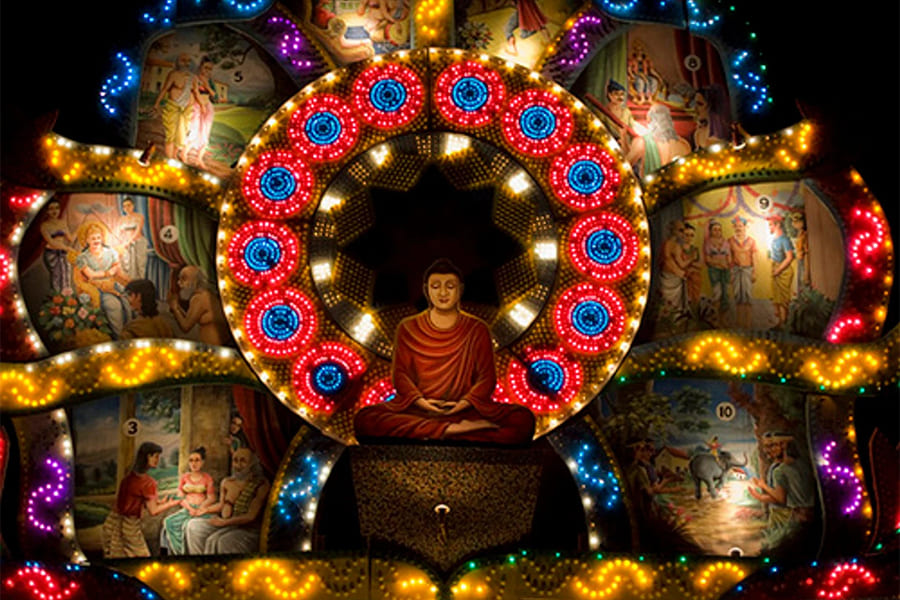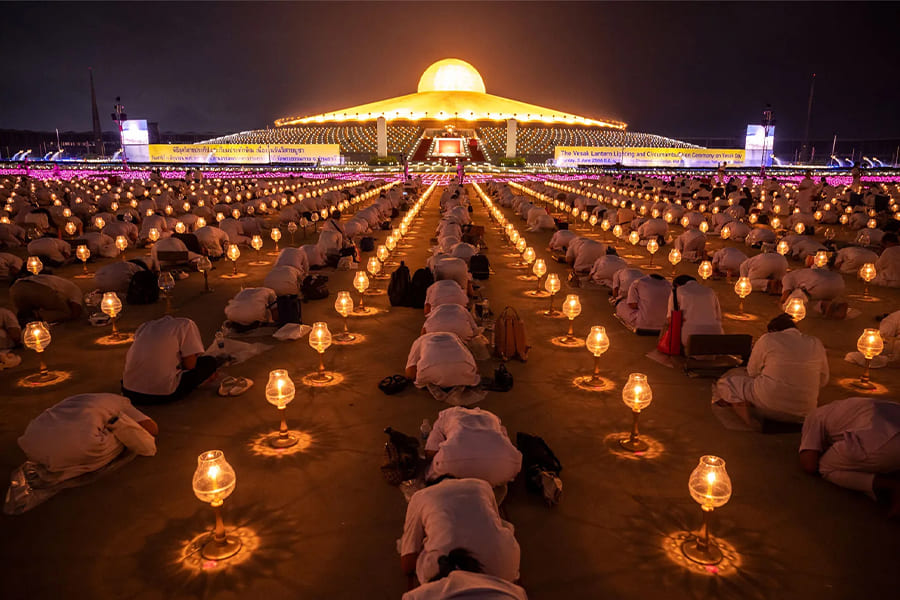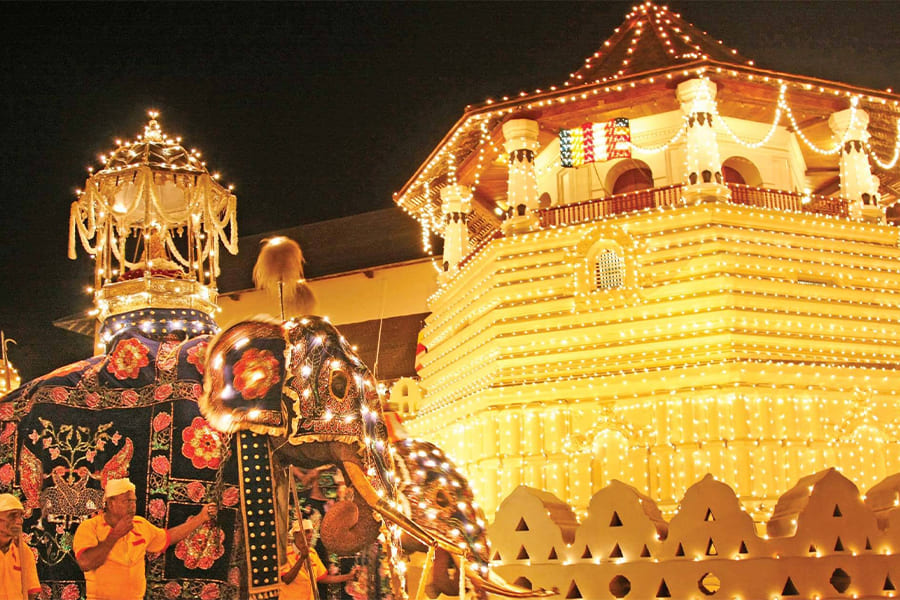Buddhism in Sri Lanka, often referred to as Sri Lankan Buddhism, is a cornerstone of the nation’s identity, shaping its culture, politics, and social fabric for over two millennia. As one of the oldest continuously practiced Buddhist traditions in the world, Sri Lankan Buddhism stands as a beacon of Theravāda Buddhism, influencing both the island’s heritage and its contemporary society. Today, it also draws countless travelers on Sri Lanka tours, eager to explore sacred temples, ancient cities, and cultural festivals deeply rooted in Buddhist traditions. This article explores the rich history, diverse lineages, cultural significance, festivals, and modern dynamics of Buddhism in Sri Lanka.
History of Buddhism in Sri Lanka
Introduction and Early Adoption of Buddhism in Sri Lanka
Buddhism in Sri Lanka traces its roots to the 3rd century BCE, when Emperor Ashoka of India sent his son, Arahat Mahinda, to introduce Buddhism to the island. This pivotal moment occurred during the reign of King Devanampiya Tissa, who embraced Buddhism and declared it the state religion. The establishment of the Mahāvihāra monastery in Anuradhapura marked the formal adoption of Sri Lankan Buddhism, making the island a stronghold of Theravāda teachings. The arrival of the Bodhi Tree sapling, brought by Sanghamitta, Mahinda’s sister, further solidified Buddhism’s sacred presence, with the tree still revered today in Anuradhapura.
Writing Down the Pāli Canon
A defining moment in the history of Buddhism in Sri Lanka was the transcription of the Pāli Canon in the 1st century BCE at Aluvihāra in Matale. During a period of political instability and famine, monks feared the oral transmission of the Buddha’s teachings could be lost. They meticulously recorded the Tipiṭaka—comprising the Sutta, Vinaya, and Abhidhamma Pitakas—on palm leaves, ensuring the preservation of Theravāda doctrine. This monumental effort cemented Sri Lanka’s role as a guardian of Buddhist scriptures, with the Pāli Canon remaining a cornerstone of Sri Lankan Buddhism.
Colonial Challenges and Revival of Sri Lankan Buddhism
The arrival of European colonial powers—Portuguese, Dutch, and British—posed significant challenges to Buddhism in Sri Lanka. From the 16th to 19th centuries, colonial policies suppressed Buddhist institutions, favoring Christianity and disrupting monastic traditions. Temples were confiscated, and monks faced marginalization. However, the 19th century saw a Buddhist revival led by figures like Anagārika Dharmapāla and Colonel Henry Steel Olcott. Their efforts, including the establishment of Buddhist schools and organizations, revitalized Sri Lankan Buddhism, restoring its prominence in national life.
Types and Lineages of Buddhism in Sri Lanka
Theravāda Buddhism Dominance in Sri Lanka
Theravāda Buddhism is the dominant form of Buddhism in Sri Lanka, shaping the island’s religious and cultural landscape. Rooted in the Pāli Canon, Theravāda emphasizes individual enlightenment through meditation, ethical conduct, and wisdom. In Sri Lanka, Theravāda is not just a religion but a way of life, influencing everything from daily rituals to national policies. Its dominance is evident in the widespread presence of monasteries, stupas, and Buddhist educational institutions across the island.
Major Nikāya (Lineages)
Sri Lankan Buddhism is organized into several nikāyas, or monastic lineages, each with distinct practices and regional influence. The Siyam Nikāya, established in the 18th century with Thai ordination, is the largest and most influential, primarily among the Kandyan Sinhalese. The Amarapura and Rāmañña Nikāyas, formed in the 19th century, cater to different caste groups and regions, offering diverse interpretations of monastic discipline. These lineages collectively uphold the integrity of Theravāda practice in Sri Lanka Buddhism.
Forest Traditions and Contemporary Movements
The forest monastic tradition, emphasizing meditation and asceticism, has a strong presence in Sri Lankan Buddhism. Monks in this tradition retreat to remote areas to practice intensive meditation, maintaining the purity of early Buddhist teachings. Contemporary movements, such as the Vipassanā meditation revival and socially engaged Buddhism, have also gained traction, addressing modern challenges like environmental conservation and social justice, further enriching Buddhism in Sri Lanka.
Buddhism and Sri Lankan Culture
Role of Monarchy and State in Sri Lankan Buddhism
Historically, the monarchy played a central role in promoting Buddhism in Sri Lanka, with kings like Devanampiya Tissa and Parākramabāhu I patronizing monasteries and building stupas. In modern times, the Sri Lankan state continues to uphold Buddhism as the foremost religion, as enshrined in the constitution. The Ministry of Buddhist Affairs oversees religious activities, ensuring the preservation of Buddhist heritage while fostering national unity through Sri Lanka Buddhism.
Rituals, Devotion, and Everyday Practice
Buddhism in Sri Lanka is deeply woven into daily life for Sri Lanka people through rituals and devotional practices. Devotees offer flowers, incense, and lamps at temples, participate in chanting sūtras, and observe the Five Precepts. Poya days, marking the full moon, are public holidays dedicated to religious observance, with meditation and temple visits being common. These practices reflect the vibrant, lived experience of Sri Lankan Buddhism.
Art, Architecture, and Cultural Expressions
Sri Lankan Buddhism has profoundly influenced the island’s art and architecture. Ancient stupas like Ruwanwelisaya and Jetavanaramaya, adorned with intricate carvings, showcase the grandeur of Buddhist architecture. Cave paintings at Dambulla and sculptures at Polonnaruwa depict Buddhist themes, blending spirituality with artistic excellence. Traditional dance, music, and literature also draw heavily from Buddhist narratives, enriching the cultural tapestry of Buddhism in Sri Lanka.
Buddhist Festivals and Pilgrimage Sites
Poson Festival
The Poson Festival, celebrated on the full moon day of June, commemorates the introduction of Buddhism in Sri Lanka by Arahat Mahinda. Centered in Mihintale, where Mahinda first met King Devanampiya Tissa, the festival features processions, illuminations, and religious discourses. It is a time for devotees to reflect on the profound impact of Sri Lankan Buddhism on their heritage.
Vesak Festival
Vesak, observed in May, is the most significant Buddhist festival, marking the birth, enlightenment, and passing of the Buddha. In Sri Lanka, Vesak transforms the island with colorful lanterns, pandals (decorated stages), and acts of charity like dansalas (free food stalls). The festival embodies the spirit of compassion and unity central to Buddhism in Sri Lanka.
Sacred Cities and Temples
Sri Lanka is home to sacred cities like Anuradhapura, Polonnaruwa, and Kandy, which house iconic temples such as the Temple of the Tooth (Dalada Maligawa). Pilgrimage sites like Adam’s Peak (Sri Pada) and Kelaniya Raja Maha Vihara attract devotees seeking spiritual merit. These sites are not only religious hubs but also symbols of Sri Lankan Buddhism’s enduring legacy.
Buddhism in Modern Sri Lanka
Educational and Social Roles
Buddhism in Sri Lanka plays a vital role in education and social welfare. Pirivenas, monastic schools, provide religious and secular education, preserving Buddhist scholarship. Buddhist organizations run orphanages, hospitals, and community programs, addressing social needs while promoting ethical values. This social engagement underscores the practical impact of Sri Lankan Buddhism.
Buddhism in Politics and Law
Buddhism’s influence extends to Sri Lanka’s political and legal spheres. The constitution grants Buddhism the “foremost place,” shaping policies on education, culture, and public holidays. Buddhist monks often engage in political activism, advocating for nationalistic causes, though this has sparked debates about the role of religion in governance within Sri Lanka Buddhism.
Contemporary Challenges and Global Influence
Modern Sri Lankan Buddhism faces challenges like secularization, ethnic tensions, and globalization. The rise of materialism and external cultural influences tests traditional practices, while interfaith dialogues aim to foster harmony. Globally, Sri Lankan Buddhism influences Theravāda communities through missionary work and the spread of meditation practices, contributing to the global Buddhist landscape.
In conclusion, Buddhism in Sri Lanka is a dynamic force, deeply rooted in history yet adapting to modern realities. From its ancient origins to its role in contemporary society, Sri Lankan Buddhism continues to inspire millions, preserving its sacred teachings while shaping the nation’s cultural and spiritual identity.

